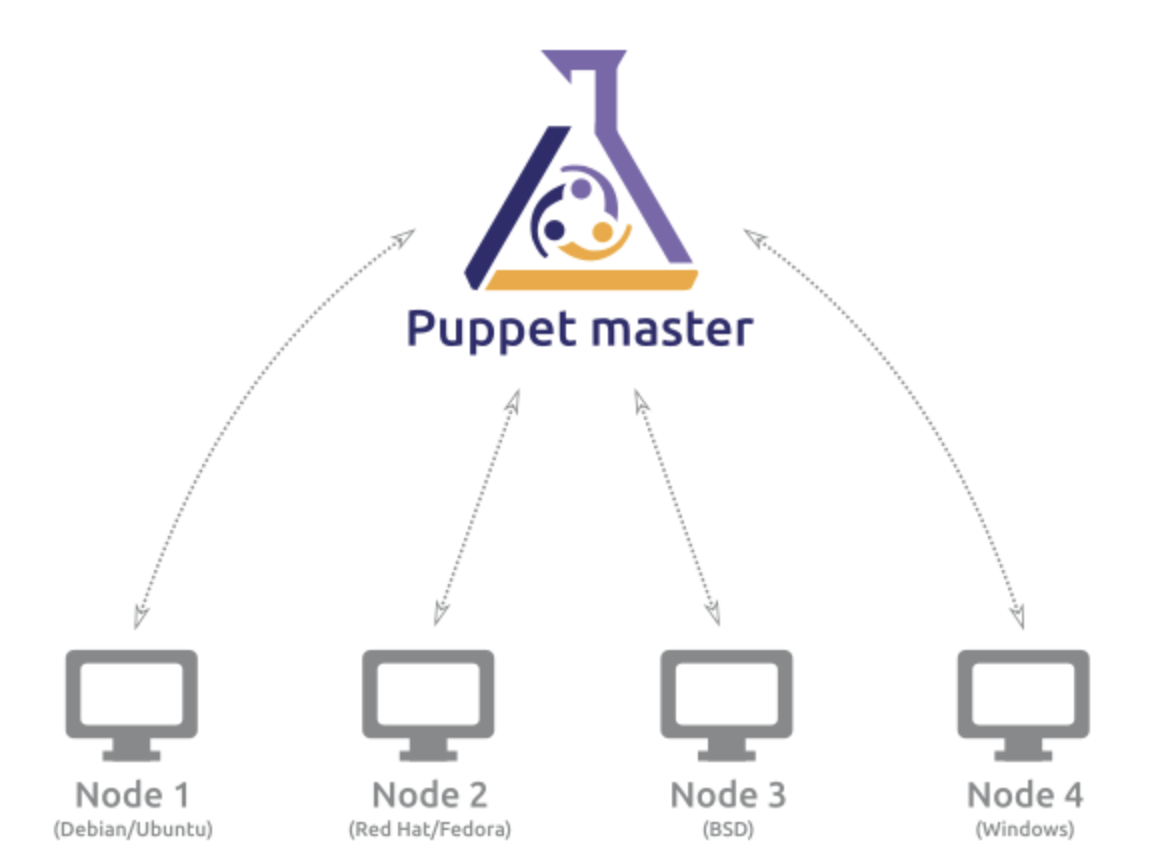架構
一開始我們先了解 Puppet 在整個運行中是如何架構出整個 configure system。
Catalogs
catalog 是記錄每個受管 Node 的資料,在 Puppet 中又分為兩種:
- Compile a catalog
- Apply the catalog
前者被編譯過,在 Puppet Master / Agent 時傳遞資料時出現,後者則是明碼在 Puppet Master / Agent 各自的目錄內。
Master / Agent

基於 pull-based 的架構 (官方建議)
Puppet 的 Master / Agent 架構通常適用於有規模的環境佈署,由 Puppet Master 提供 configuration,在每台要被佈署的 Node 安裝 Puppet agent 向 Master 獲取 configuration。
Puppet Master 通常由 N + 1 台 Puppet Server 構成,必須要能夠承受所有的 Puppet agent 訪問,而 Puppet agent 通常透過 service 運行或是 cron 來定期向 Puppet Master 更新 catalog。
Agent 透過 catalog 更新完畢後,將 report 回傳給 Puppet Master。
Masterless

基於 push-based 的架構
無 Master 又稱獨立佈署的架構,透過 Puppet apply 進行單機佈署的方式達成。
Masterless 很常被應用於 Docker or Vagrant 等 image 環境使用,通常適用於數量少的環境。
Tasks and Plans

Puppet tasks and plans 是 puppet 推出基於 push-based 的一次性的臨時佈署,與 Ansible 的方式相似,彌補 Puppet 長期以來使用 pull-based 必須等待 deploy time 的缺點。
可以使用 Bolt 開源專案或是企業版的 Puppet Enterprise Task Management (available in Puppet Enterprise 2017.3) 來實現 Tasks and Plans。